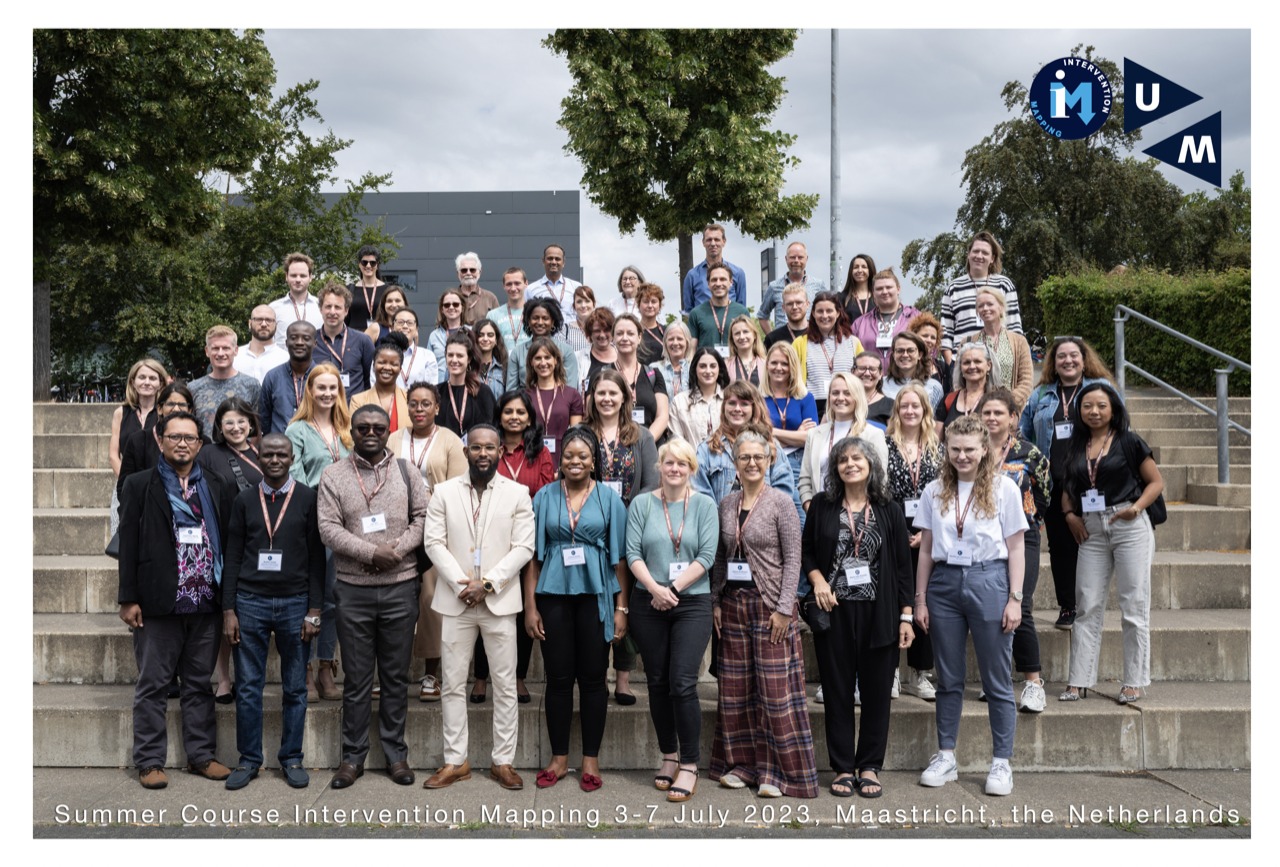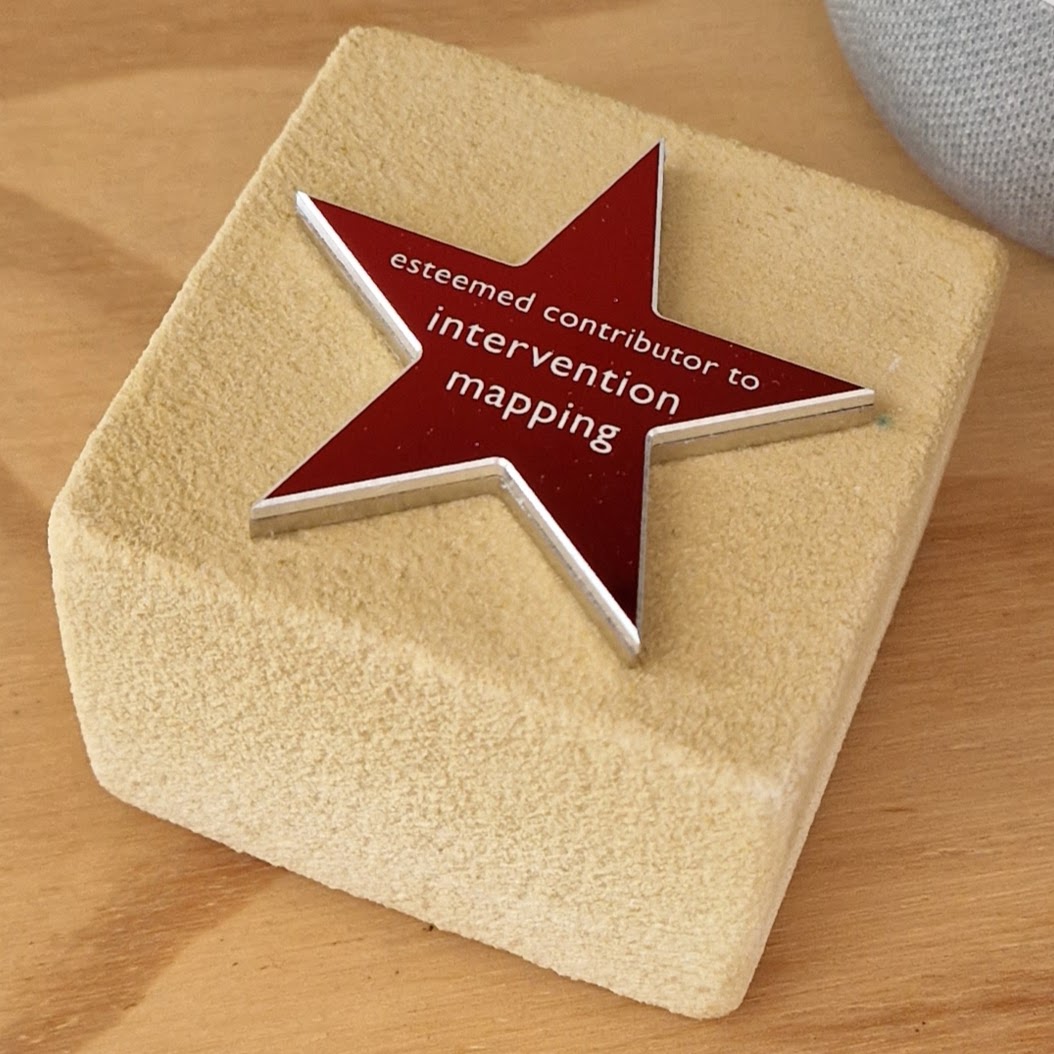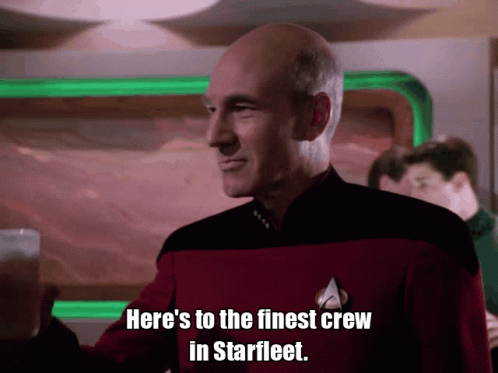This is a Mastodon thread. The original thread is available here:
Friday the 7th of July 2023, the #InterventionMapping (IM) summer course that trains professionals to systematically design theory- and evidence-based #BehaviorChange interventions ended, certifying around fifty fresh IM-trained professionals.
The closing session beautifully reflected the nature of the Intervention Mapping community. I’ll explain a bit about that here.
(after three more introductory toots with some background info)

Intervention Mapping is around thirty years old, having been conceived in the nineties: the first publication is from 1998 (https://doi.org/c32mz5), and the first book from 2001.
Since then, IM has continuously improved and grown, became integrated in more and more curricula, and is currently seen as a kind of gold standard for systematic intervention development.

The main drawback people report is that it can take a lot of time and effort to do properly (but also see https://doi.org/jb8k).
Unfortunately, this is a fact of life: there are no silver bullets. In fact, this is a property of the types of problems IM is applied to, not of IM: by the time IM is involved, all easy solutions have usually been tried (and failed). If a problem is complicated, learning what you need to learn to tackle it will always take a lot of time and effort.
For those unfamiliar with Intervention Mapping, I’ve written a super-brief Mastodon thread to introduce it: https://mastodon.nl/@matherion/110695074850807794. It was tooted with the {quartodon} R package, so you can also read this blog post instead: https://behaviorchange.eu/posts/2023-07-intervention-mapping-in-a-thread.html
Ok, enough intro.
As I said, the closing session highlighted the nature of the Intervention Mapping community.
This community reflects the generous and open attitude of its “founders”. They created IM to support the development of effective health promotion programs, and in the following decades they took the role of facilitators and stewards.
Although this may seem natural, this isn’t always the shift that occurs.
For example, sometimes when a method becomes popular, it sort of becomes a means of amassing fame or prestige for its founders. In such situations it becomes more about the persons, rather than about the methods.
Instead of facilitating the further development of the method, their role may even shift to policing who is and who isn’t allowed to contribute to its development.
Fortunately, instead, Intervention Mapping was generously nurtured by its founders.
As a consequence, Intervention Mapping has steadily kept improving over time. One testament to these changes are the way the main terms changed over time.
For example, “change objectives” (the very specifically formulated psychological constructs that an intervention targets) were originally called “learning objectives”; and “environmental conditions” were originally called “external determinants”.
Now, around thirty years after its inception, the IM protocol is used and taught all over the world - and its founders have retired.
This year, 2023, marked the last time Guy Parcel made the trip from Houston to Maastricht to co-facilitate the Intervention Mapping Summer School.
To celebrate this moment, co-founder Gerjo Kok asked the core group of people involved in IM to ensure we could attend the Summer School’s closing ceremony.
Although some of us tutored a group, others (like me) only gave a lecture (for a very old recording of that lecture, see https://youtu.be/BuOkDTo4vA0), so Sarah (Stutterheim) and me had a ☕ first to ensure we’d be on time, and at 12:00 started awkwardly standing outside the lecture hall, as one does 😬
Mariëlla (Muermans) joined us and Gerjo let us in. We joined while students asked questions about using IM in the real world (very relevant questions; this was clearly an excellent cohort).
When all questions had been asked, Gerjo took “the stage”, after having asked me to collect a “fragile” box from outside and bring it to the front of the room.
Gerjo then started his presentation, reminiscing about the stained glass artwork of the IM logo that the IM founders had commissioned years earlier, and then moving on to show and describe the new artwork to commemorate the present occasion.

This art is special partly because it was created by Nora Oosting. Nora was the partner of Herman Schaalma, a cherished Intervention Mapping expert who passed away in 2009.
In addition, it perfectly symbolizes the joint development of IM. The star figures prominently in both the Texas and the Maastricht flag. Finally, the base is made of merle, a type of stone common in the Maastricht region, and the star is made of aluminum, a metal that has long been produced in Texas.
It looked amazing and was very well thought through, so everybody was very impressed.
This is when the twist happened: Gerjo announced that in fact this occassion was where the three authors of the original IM book (2001) that were present, Guy Parcel, Nell Gottlieb, and Gerjo Kok, symbolically “handed the Intervention Mapping keys” to “the next generation”.
Us “the next generation” (TNG) people didn’t see this coming, and it took a while to sink in through our baffled states.
This twist nicely reflects the attitude that characterizes the IM founders. Their focus on passing on the method and including others in the community, rather than on themselves, helps Intervention Mapping to flourish.
| As for us TNG people, I think we were all simultaneously proud and humbled. |
| For my part so much so that I decided to write this somewhat awkward toot thread / blog post to memorialize this occasion – but also to take a moment to reflect on how remarkable it is that Gerjo, Guy, and Nell (and Nora) made this moment about others rather than themselves. |
This way, the closing ceremony highlighted the community that has grown around Intervention Mapping, and of which we (well, I at least) were hardly aware until that Friday.
It showed the fertile ground for further growth, emphasizing the potential for the future, to work towards more effective health promotion in an ever expanding community.
